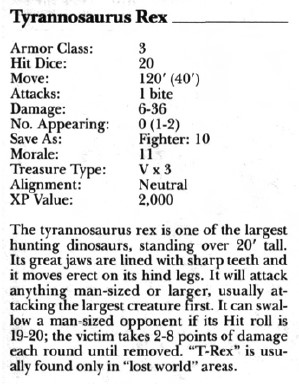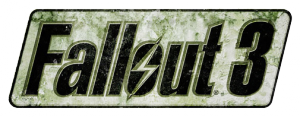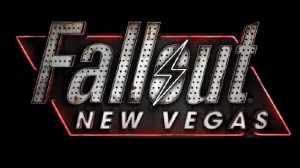 I still don’t buy many games for the PS3, but after finishing up the ones we had in the house I was looking for something fun and engaging. I saw the following quote for Borderlands and thought I’d give it a shot (no pun intended),
I still don’t buy many games for the PS3, but after finishing up the ones we had in the house I was looking for something fun and engaging. I saw the following quote for Borderlands and thought I’d give it a shot (no pun intended),
87 bazillion guns
I’d also read a couple of comments about it being much like Fallout 3 but with more emphasis on the first person shooter element, and since I really loved Fallout 3 I was sold. After the obligatory patch and system update, I was up and running. I own a PS3, so my comments reflect that platform, although the game is available on most major gaming platforms.
The Setting
The first thing that struck me about the game setting is that it’s not only similar to Fallout 3, it could be Fallout 3. The game takes place on Pandora, an apparently post-apocalyptic world full of bandits, small outposts of humanity and strange creatures. There’s clearly plenty of advanced technology around including robots, satellites, big satellite uplinks, transport systems, etc., but the world has basically gone to shit and is overrun by gun wielding bandits of all shapes and sizes. The human settlements have a distinctly movie-wild-west feel and although there aren’t any cowboy hats in view you get the feeling this is the Wild West by any other name.
The world is broken up into zones or distinct maps of various sizes. Most of them are large, open areas but there are a few underground cavernous locations and one or two extensive indoor/industrial locations. As you progress in power the story naturally progresses you through these different places. I felt some of them were underused with only a few quests while others were heavily packed with content. Some major locations contain quest centres (and so, friendly NPC’s) and you return to those often to pick up new quest or hand-in completed quests, while the other areas have mostly unfriendly NPC’s and are there for you to quest in.
The artwork is pretty impressive (although somewhat repetitive), and the game has a pretty big sense of scale. Despite the size of some locations however, they still manage to feel very claustrophobic when required which is nice.
 The Characters
The Characters
Since it’s a roleplaying game (with FPS elements), there are a number of classes you can choose from. There are four main characters, each representing a single class.
- Soldier: A mercenary style character who favours combat rifles and shotguns.
- Siren: The only female character, a wielder of elemental powers and sub-machine guns.
- Hunter: A scrawny individual who likes sniper rifles.
- Berserker: A huge brick of a man, preferring exploding devices and hitting things with his fists.
Each of the characters has a little bit of back-story, and the game intro presents them to you to give you an idea what they’re about. The characters vary based on the skills they can spend points in when they level up along with a single unique skill each of them gets. Soldiers have a deployable auto-gun, the Siren can turn invisible, the Hunter can summon a flying pet and the Berserker can go into a rage. The additional skills support the class in various ways. For example, Soldiers can improve their deployed gun, can give themselves ammo regeneration, increase their resistance to bullets, etc. I completed the game with Soldier and have messed around briefly with the others. On the assumption that the game boils down to ‘shooting everything you can find before it kills you’, the choice of class really only affects how you kill stuff and where you spend your money.
In the multi-player game, the class choices can support each other (for example, Soldiers can heal other characters with gunfire if they spend points in the right skill).
The Game-play
Borderlands boils down to ‘complete quests to gain levels and better gear and follow the main quest to complete the story’. Not much different to Fallout 3 in that respect, although Borderlands makes it even easier to find side quests because they pop up in central locations and a little friendly robot shouts at you when there are new quests available.
Completing quests can involve killing enemies, locating objects or people and even buying equipment. You are rewarded with experience points (so that you can level) and cash (so you can buy new equipment). When you gain a new level you earn a skill point which you can use to customise your character. It’s not possible to purchase all the skills so you’re going to end up specialised in some areas.
Equipment can be bought from some locations, found on dead enemies and looted from chests. New equipment takes the following forms,
- Guns – there probably are 87 bazillion guns, but if you’re being cynical it’s because most of them are randomly generated and vary only in minor ways. There are 8 classes of gun (combat rifle, repeater (automatic pistol), revolver, shotgun, sniper rifle, rocket launcher, sub-machine gun, alien weapons) and your character improves in their skill for each as they kill things with them. Guns have varying amounts of damage, recoil, elemental damage (e.g. fire or acid), clip size, zoom, etc., etc. Those attributes are generally randomly generated to result in the huge range of choice. A lot of game time can be spent trying to find the ‘best’ gun in each of the categories you care about.
- Grenades and grenade mods – grenades are carried around like ammunition, and you can equip a single grenade mod. Grenade mods change how your grenades work and how much damage they do. For example, turning them into proximity mines, bouncing bombs or even devices which transfer health from your enemies to you.
- Class mods – a device which improves the effectiveness of your class skills (one equipped at a time at most).
- Shields – again, your character can equip a single shield which provides defences against incoming damage, increases health, and other benefits.
- Other – there are some other items in the game which I won’t go into, the above four are the ones you spend most time working out what to do with.
The quests are generally enjoyable and the mechanics usually engaging. However, they do get repetitive. It’s great killing 8 bandits, until you realise that just about any quest you complete needs you to kill 15-20 bandits and get into their camp to find something. I guess it’s the nature of the FPS element, which brings me to …
The main difference between this RPG and others, is that combat is purely based on FPS tactics. You have a gun, a cross-hair and the bad guys are shooting at you. So you will need your regular FPS skill-set. However, because it’s an RPG you can scale the game to your own skill level. If you’re struggling, you can hang around an area killing stuff and getting a level or two and then retry a quest with your new found power. I like that aspect, and when I found the quests getting too hard, I put in a bit of work and levelled and found the level at which I was more comfortable.
The Storyline
Borderlands has you chasing down a secret, hidden, mysterious vault (Fallout 3 much?) on Pandora. You’re dumped from a bus outside a little settlement (so little it only has one person in it), which you immediately have to rescue from bandits. Along the way you meet a robot (Claptrap) who shows you around, and are visited by a mysterious voice in your head (your guardian angel) who tells you to trust the robot. From there, it’s all about the quests. You start earning the trust of the locals while also trying to find out more about the vault. As you progress through the storyline you learn small bits about the aliens who inhabited the planet and the corporations who are fighting over the vault. However, it’s a pretty minimalist storyline to be fair, and most of the time is spent hunting down bad guys, terminating them with extreme prejudice and looting more stuff to sell.
The major quest line is pretty easy to spot and follow, although you’ll need to do the side quests to increase in power enough to achieve anything. In many cases, the side quests are more entertaining. The only issue is that they do get repetitive, there are only so many ways to say ‘travel to here, through these bad guys who you will need to kill, and collect something’. I was a little disappointed with the end sequence of the game but won’t spoil it here for you.
Multi-Player
The multi-player element of Borderlands is probably pretty good. However, I’ve never played it so I can’t comment. You can play two-player split screen on one console, on-line, or LAN based. It’s co-operative multi-player, I believe, with no PvP element. Having said that, there is a duel option, so during the game you can duel your opponents. This is outside of the main scope of the multi-player game though, in my view.
Closing Comments

Borderlands was good fun in general. I did get a little bored a couple of times after a long session, doing very similar missions over and over, but a break from the game helped, and coming back with fresh eyes made it enjoyable again. I loved being able to scale the game myself, I’m not a huge FPS lover and I don’t have the skills of the average 8 year old, so being able to outlevel the bad guys when required really did make the game more enjoyable. Another feature which helped avoid the repetition was that bad guys don’t chase you for ever. If you’ve cleared a camp, and the bad guys are back and you can’t face killing them all again – just run through. If you survive, they give up after a while, you just need to find a place you can get to which is safe. Some people might hate those two features, saying they make the game too easy, but they allowed me to enjoy the content, play at my own pace, and complete the game without getting too frustrated.
The boss encounters were a little underwhelming, but I guess they match most FPS bosses (scoot-and-shoot the glowing bits), the cinematic style and boss info made them worthwhile in the end.
There’s definite replay value in the game, either as one of the other classes, or the same class with different skill choices. Once you’ve completed the game on Walkthrough 1 you can start again on Walkthrough 2 with the same character, level and equipment. All the enemies are boosted to your level, so the little dog-like beasts you killed at level 1 are now level 33 and ready to chew your face off. I can see myself trying to beat it a second time before even trying another class.
Borderlands held my attention for the 5 or 6 days it took to finish it, provided something like 20+ hours of game-play on one run through, and had plenty of humour to keep me amused. Well worth the asking price, in my view (if you accept that games cost what games cost), and I’ll probably hold onto it to see if there’s any downloadable content I want to see.






